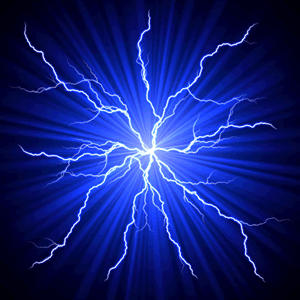Electrically Conductive Adhesives Enable Low-Temp Electronics
$1.2 billion of electrically conductive adhesives (ECAs) are already selling each year, and they are becoming increasingly common to replace solders in a variety of functions, applications, and industries.
 Materials are needed to replace the estimated 50,000 metric tons of tin-lead solder currently used each year, but there are no “drop-in” replacements for eutectic tin-lead solder. $1.2 billion of electrically conductive adhesives (ECAs) are already selling each year, and they are becoming increasingly common to replace solders in a variety of functions, applications, and industries.
Materials are needed to replace the estimated 50,000 metric tons of tin-lead solder currently used each year, but there are no “drop-in” replacements for eutectic tin-lead solder. $1.2 billion of electrically conductive adhesives (ECAs) are already selling each year, and they are becoming increasingly common to replace solders in a variety of functions, applications, and industries.
ECAs consist of a polymeric resin (such as an epoxy or a silicone) that provides physical and mechanical properties such as adhesion, mechanical strength, and impact strength, and a metal filler (such as silver, gold, or nickel) that conducts electricity. In order to reduce the volume of filler used, increase the electrical conductivity, and decrease the finest possible pitch width, there is research into using nanoparticle fillers including silver nanowires, silver nanoparticles, nickel nanoparticles, and carbon nanotubes.
Obviously, in all these materials, the electrical conductivity is of primary importance. However, the thermal conductivity must also be high enough so that components do not overheat. The thermal conductivity of ICP is approximately 20W/m.K, as compared to 60W/m.K for lead solders. Adhesion to the mating surfaces must be good enough that there will not be adhesive failure, and the tensile strength must be high enough to avoid cohesive failure, even under bending and flexing conditions. The viscosity must be low enough for easy dispensing, but high enough after curing to avoid pump out and dry out. In some applications, the operating temperature will be important and, whereas solders can operate up to 270°C, ECAs are limited to around 200°C. It must be non-toxic because there is no point in replacing lead with another equally toxic material.
Lead solder melts at 215°C, whereas isotropic conductive paste can be cured as low as 110°C. This opens up possibilities for using plastic substrates to allow a new generation of flexible electronics. In order to use PET substrates without the risk of buckling or warping during curing, the cure temperature needs to be brought below 80°C.
Key applications include:
- Photovoltaic modules – ECAs have suffered from poor stability when applied to copper and tin metals, but improved ECAs for PV applications have been available since 2010. Lower-temperature interconnections can allow thinner wafers and reduce warpage and breakage of solar cells.
- LCD and OLED displays – ACFs have found a particular niche market in packaging flat panel displays. In general, bending or physical deformation of ECAs can degrade the electrical conductivity. Therefore, novel flexible electrically conductive materials that respond well to repeated bending or high elongations will be required for future flexible display technologies.
- Touch panels – The damage to the substrates can be reduced with a lower bonding temperature during assembly. The penetration of touch panels in the cell phone market is forecast to reach more than 40% in the near future.
- LEDs – It is quick and cheap to mount LEDs using conductive adhesives and the thermal penalty is tolerable if the adhesive layer is kept thin.
- RFID chips – Conductive adhesives are used for mounting temperature-sensitive chips on smart cards because of low curing temperatures.
Currently, 74% of anisotropic conductive film (ACF) is used in the manufacture of LCD or OLED displays. Displays are becoming more widely used in consumer electronics, aerospace, defense, automotive, and infrastructure sectors. UV-thermal cure mechanisms must be developed to lower cure temperature to allow plastic substrates for flexible displays. However, according to IDTechEx Research’s report entitled Electrically Conductive Adhesives 2016-2026, this market is still set to diversify with the market for ACF in non-display applications reaching more than $1 billion by 2026, due to the reliable properties, thinness, and ease of processing. Metallic coatings on polymeric particles will allow lower-cost fillers.
Author Rachel Gordon is a technology analyst at IDTechEx.
For more information on electrically conductive adhesives and IDTechEx’s report on the subject, click here.






